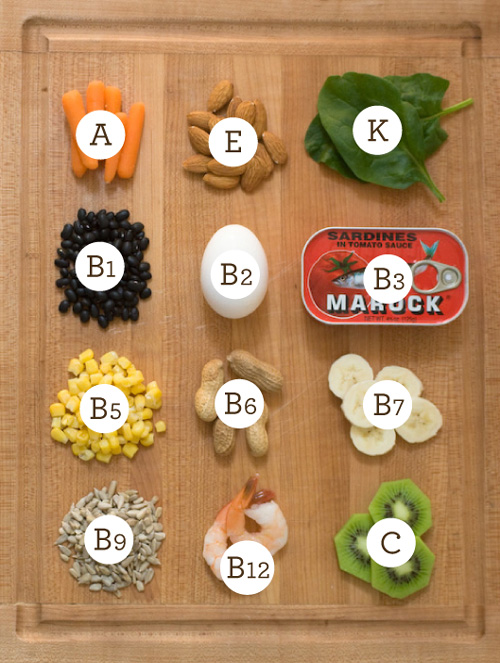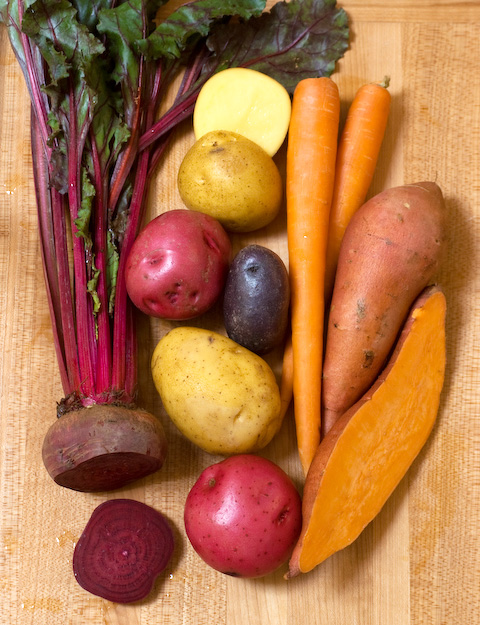The Vitamin Era
Food traditions are important to families, especially at Easter. Our observance started Saturday morning, with the children’s Easter egg hunt. Dozens of children scrambled to find hidden eggs, while the morning sun competed with a refreshing ocean breeze to relax the adults. Afterwards, we had a family breakfast. On Sunday we worshipped in the morning and gathered for family dinner in the afternoon. We didn’t have ham this year, there were already two ham bones in our freezer. The menu featured slow-roasted brisket of beef, Skip’s scalloped potatoes (recipe to follow), peas, green salad, and orange rolls. Yes, deviled eggs too. After dinner we took a sunset stroll back to the park so the grandchildren could find the last of the hidden eggs, and then returned home for strawberry shortcake (using a new, healthier recipe). And we started a new tradition, a game to see who had the toughest Easter egg. Our best Easter ever? Yes, and our saddest.
Our daughter called Saturday evening in tears: long time friends had lost an exceptional daughter to an auto accident as she traveled home for Easter. You have ties to this family too, in a way, for the mother is the source of our featured recipe: Beth’s Vegetarian Enchiladas. Our daughter hurried to the home to offer condolences. She couldn’t help but notice how the family table, carefully prepared for the next day’s Easter dinner, included a place setting for the daughter who would not come this way again.
The second death was a person with whom we had worshipped for years; she passed away on the day known as Good Friday. She was 62 and had never married. A decade before she had declined surgery for an ovarian cancer, because she had not given up her dream of marriage and motherhood. A woman risking her life for a dim chance of creating life? The idea is at once irrational yet deeply moving.
So our thoughts on Easter morning, stirred by the music of the day, were about the preciousness of life. We eat well not to live forever, but to live well. And vitamins are very much a part of living well. I apologize for this unusual introduction to vitamins, but the events of the weekend have given new meaning to old truths.
New Knowledge
The discovery of vitamins in the first half of the past century created a sensation. As vitamins are exogenous, meaning not produced by the body, we must get them in our diet. People were fascinated at the power of microscopic quantities of chemicals to cure dreaded deficiency diseases like scurvy (vitamin C), beriberi (B1), and rickets (D). The first discoveries (there are 13 known vitamins) were made in Europe but World War I intervened and American science gained prominence. With the discovery of vitamins, the idea began to grow that we knew just about everything that could be known of nutrition. In America, anything that fascinates soon becomes a business and vitamins were no exception. In our next post we’ll take a closer look at the business of vitamins.
The discovery of vitamins illustrates the problem of nutrition done the American way—new knowledge rather than helping often has the opposite result of making thing worse. There is that saying, you know, “a little knowledge can be a dangerous thing.” When we cured the vitamin deficiency diseases with synthetic vitamins, we began to believe that manufactured molecules could heal whatever ailed us. Futurists speculated that a meal could someday be taken in a single pill, a great labor and time saver. There was a corresponding loss of respect for the sanctity of natural foods. Fortunately, this is being rediscovered.

The best vitamin factories are plants, or the creatures that eat plants. The picture above shows natural sources for vitamins (I was surprised at the concentration of B complex vitamins and vitamin E in sunflower seeds). This is the traditional and optimum way to get our vitamins—through a variety of colorful whole foods. Because much of the standard American diet consists of food-like, factory-made concoctions, we now live in a state of sub-clinical vitamin deficiency. Sub-clinical means the consequences aren’t serious enough to notice. This low-level deficiency is referred to as insufficiency. Long-term vitamin insufficiency is a little-studied medical condition but is suspected to play a role in the development of chronic disease. In the richest of nations, vitamin insufficiency is widespread. What are our most serious vitamin insufficiencies today? Here are three:
Vitamin D: There is controversy (previously reviewed here) regarding the optimum level. Bottom line is we don’t know for sure, but some argue that higher levels are protective of a number of diseases. If they’re right, most Americans are deficient or at least insufficient and this is a risk factor for a number of chronic diseases. In northern latitudes wintertime vitamin D deficiency can be a health problem.
Folate: Previously discussed here, folate is the preform of Vitamin B9 (folic acid is a synthetic form), and is a common deficiency that raises the risk of neural tube birth defects. The 2010 Dietary Guidelines for Americans strongly urges women capable of becoming pregnant to supplement as needed to get 400 mcg folic acid daily.
Vitamin B12: B12 is vital to building red blood cells, to DNA formation, and nervous system health. Insufficiency is a risk factor for anemia, fatigue, irritability, depression, cognitive loss, mental disorders, stroke, elevated homocysteine (a cause of atherosclerosis and heart disease), and may be a cause of Alzheimer’s disease. Add infertility and recurrent fetal loss to the list. The nature of these conditions makes diagnosis difficult so B12 deficiency is often overlooked. Long-term vegans are at risk for B-12 deficiency but insufficiency is widespread, especially among the elderly. The Framingham Study found 40% of adults 26-83 years of age to be insufficient and 9% were outright deficient.
________________________________________________________________________________________________
Bottom line: In the U.S. there is widespread vitamin insufficiency due to the spread of processed foods. The solution is to eat a diet rich in natural sources of vitamins. John A. and Leah Widtsoe understood this back in 1937 when they wrote their book, The Word of Wisdom, and stated: “Let this be emphasized: one is much safer in taking vitamins and minerals from natural foods than from artificially prepared drug products.”

Please add comments and from your vitamin experience.
Need a reminder? Download our Healthy Change reminder card. Print and fold, then place in your kitchen or on your bathroom mirror to help you remember the Healthy Change of the week.
 Monday, April 25, 2011 at 11:47AM | by
Monday, April 25, 2011 at 11:47AM | by  Skip Hellewell |
Skip Hellewell |  17 Comments |
17 Comments |  6 References | | in
6 References | | in  healthy change,
healthy change,  vitamin d,
vitamin d,  vitamins |
vitamins |  Email Article
Email Article 













